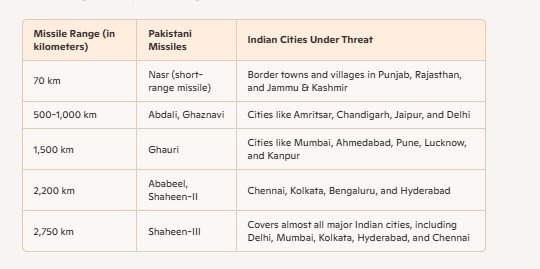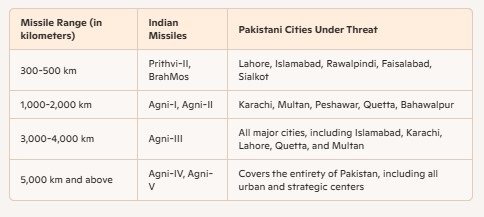Hyderabad: In case of war, India has a distinct advantage over Pakistan with its Agni-V. Its missile program is robust and more advanced in terms of range, diversity, and technological capabilities compared to Pakistan. As a result, the entire geographical span of Pakistan is within the range of India’s missile arsenal, while Pakistan’s missile capabilities are more regionally focused.
India’s Missile Reach
India possesses long-range ballistic missiles like Agni-IV (over 4,000 km) and Agni-V (over 5,000 km), which are capable of striking targets far beyond Pakistan. Even the older Agni series, such as Agni-III (3,000–4,000 km range), can reach every strategic and urban center in Pakistan, including Islamabad, Karachi, Lahore, Quetta, and Peshawar. With its diverse array of missiles, India holds the ability to not only reach Pakistan comprehensively but also project its power beyond South Asia.
Pakistan’s Missile Reach
Pakistan’s missile program includes weapons like Shaheen-II (2,200 km) and Shaheen-III (2,750 km), which can target many key Indian cities. For example:
– Shaheen-II can reach Hyderabad, Bengaluru, and Kolkata.
– Shaheen-III extends Pakistan’s reach to more distant cities like Chennai and beyond.
Pakistan lacks missiles with ranges similar to India’s Agni-V, which are capable of targeting regions outside South Asia. This gives India a strategic advantage in terms of geographical coverage and flexibility.
Key Observations
1.India’s Strategic Edge: India’s missiles have greater ranges and are part of a larger strategy that includes submarine-launched ballistic missiles (SLBMs), such as the K-4 (3,500 km), enhancing second-strike capabilities.


2. Pakistan’s Focus: Pakistan has concentrated on medium-range missiles for regional deterrence, primarily targeting Indian cities of economic and strategic significance.
3. Defense Factor: India has advanced missile defense systems, like the S-400 and Ballistic Missile Defense (BMD) system, to intercept potential threats. Pakistan’s missile defense capabilities are relatively underdeveloped.
India’s technological advancements and its ability to target areas far beyond Pakistan give it a significant upper hand in strategic deterrence. At the same time, both nations remain committed to missile programs for defensive postures and deterrence strategies to maintain regional stability.

